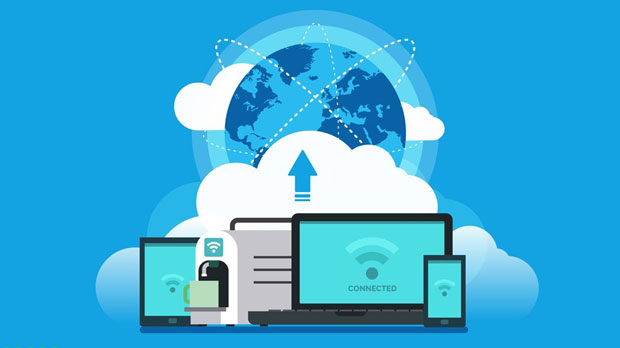In the rapidly expanding world of e-commerce, Amazon remains one of the largest and most competitive platforms. Sellers on Amazon face constant challenges, such as price fluctuations, listing restrictions, and the need to manage multiple accounts effectively. Residential ip proxies have become a critical tool for overcoming these hurdles. A residential ip proxy allows sellers to mask their real IP addresses and use a proxy from a genuine household network, offering a range of benefits such as anonymity, security, and avoiding bans or account suspensions. This article will explore why many Amazon sellers rely on residential IP proxies, analyzing the key benefits and their relevance to running a successful business on the platform. Understanding Residential IP ProxiesBefore diving into the reasons why many Amazon sellers opt for residential IP proxies, it is important to understand what they are. A proxy is an intermediary server that acts as a gateway between the user and the internet. Residential IP proxies, in particular, are IP addresses provided by Internet Service Providers (ISPs) to homeowners. These proxies are more difficult to detect as they appear to originate from real residential connections, making them much harder for Amazon to flag compared to datacenter proxies, which come from data centers.1. Enhanced Security and PrivacyOne of the primary reasons Amazon sellers use residential IP proxies is to protect their business from cyber threats. Online security is a significant concern, especially when handling sensitive data such as customer information, sales data, and financial details. By using a residential ip proxy, sellers can mask their real IP addresses, ensuring that their actual location and network details are hidden from potential hackers or cybercriminals. This enhanced level of privacy is crucial for avoiding targeted attacks, phishing attempts, and other malicious activities.2. Access to Geo-Targeted MarketsAmazon operates in multiple countries, and each region has different market dynamics, regulations, and customer behavior. Sellers looking to expand into international markets often face challenges in accessing region-specific information or managing listings that comply with local rules. Residential IP proxies allow Amazon sellers to appear as though they are browsing from a specific location, enabling them to access geo-restricted content, monitor local competitors, and adjust their pricing strategies accordingly. This ability to access multiple geographic regions opens up new opportunities for market research and expansion.3. Avoiding Account Bans and SuspensionsAmazon is known for its strict policies when it comes to account management. Sellers who violate Amazon’s terms of service, whether intentionally or unintentionally, risk having their accounts banned or suspended. Common violations include manipulating reviews, creating multiple accounts, or engaging in price-fixing practices. Residential IP proxies play a crucial role in helping sellers avoid detection and minimize the risk of being banned. By rotating IP addresses and masking their original location, sellers can operate multiple accounts without drawing attention from Amazon’s security systems. This helps prevent Amazon from identifying any suspicious patterns of activity that could lead to account penalties.4. Managing Multiple Amazon AccountsRunning multiple Amazon accounts is often a strategy used by sellers to diversify their product offerings or target different customer segments. However, Amazon has strict policies regarding the management of multiple accounts. Sellers who attempt to manage multiple accounts from the same IP address risk having their accounts linked together, which could result in suspension. Residential IP proxies allow sellers to operate several Amazon accounts independently by providing different IP addresses for each account. This ensures that Amazon cannot link the accounts based on their IP addresses, reducing the risk of penalties or account suspension.5. Bypassing CAPTCHA and Other Anti-Bot MeasuresAs part of their security measures, Amazon often uses CAPTCHA systems to prevent bots from scraping data, manipulating listings, or executing fraudulent transactions. These CAPTCHA systems can be a significant obstacle for Amazon sellers who rely on automation to perform tasks such as price monitoring, inventory management, or competitor analysis. Residential IP proxies help bypass these CAPTCHA systems by rotating IP addresses and mimicking human-like browsing behavior. This makes it more difficult for Amazon’s security algorithms to detect automated activities, allowing sellers to continue with their tasks without being interrupted.6. Improved Price and Listing MonitoringPrice competition is fierce on Amazon, and keeping track of competitor listings, pricing strategies, and product availability is essential for sellers to stay competitive. Residential IP proxies allow sellers to monitor competitor listings without revealing their identity or location. By using proxies to simulate browsing from different geographic locations, sellers can track how their competitors’ prices fluctuate in real-time and adjust their own prices accordingly. This competitive intelligence helps sellers remain agile in an ever-changing market and optimize their pricing strategies to maximize profits.7. Overcoming Amazon’s Restrictions on Web ScrapingWeb scraping is a common practice for Amazon sellers looking to gather valuable data, such as customer reviews, product trends, and competitor information. However, Amazon has strict rules in place to prevent web scraping and can block IP addresses that engage in this activity. Residential IP proxies provide a solution by allowing sellers to scrape data without triggering Amazon’s security systems. By rotating IP addresses and using proxies that appear as regular residential users, sellers can bypass these restrictions and gather the data they need for effective decision-making.8. Avoiding Geographical Restrictions and Pricing VariationsAnother challenge faced by Amazon sellers is geographical pricing variations. Amazon often adjusts prices based on the seller’s location, meaning that sellers from different regions may see different prices for the same product. By using residential IP proxies, sellers can simulate browsing from different countries or regions, ensuring that they see the prices and offers available in those markets. This enables sellers to compare prices across different regions, identify opportunities for arbitrage, and adjust their pricing strategies to maximize profits.Conclusion: The Strategic Importance of Residential IP Proxies for Amazon SellersIn conclusion, residential IP proxies have become an essential tool for many Amazon sellers, providing a range of benefits that contribute to enhanced security, privacy, and operational efficiency. Whether it’s managing multiple accounts, avoiding account suspensions, conducting market research, or monitoring competitors, these proxies offer an effective way to bypass Amazon’s security systems while ensuring anonymity and compliance. As the competitive landscape on Amazon continues to evolve, leveraging residential IP proxies will likely remain a strategic advantage for sellers looking to succeed in a rapidly changing market.
May 15, 2025



































































